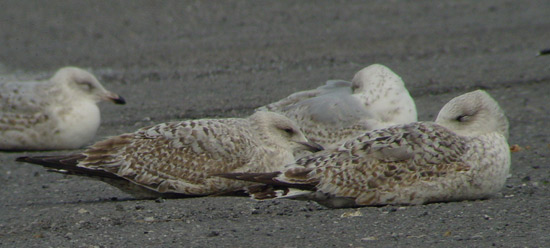 Yellow-legged
Gull- Geelpootmeeuw (L. michahellis): 2cy March
Yellow-legged
Gull- Geelpootmeeuw (L. michahellis): 2cy March
(last update: 08 december 2003)
YLG
1cy May
YLG
1cy June
YLG
1cy July
YLG 1cy August
YLG 1cy September
YLG 1cy October
YLG 1cy November
YLG 1cy December
YLG
2cy January
YLG 2cy February
YLG 2cy March
YLG 2cy April
YLG 2cy May
YLG 2cy June
YLG 2cy July
YLG 2cy August
YLG 2cy September
YLG 2cy October
YLG 2cy November
YLG 2cy December
YLG
3cy January
YLG 3cy February
YLG 3cy March
YLG 3cy April
YLG 3cy May
YLG 3cy June
YLG 3cy July
YLG 3cy August
YLG 3cy September
YLG 3cy October
YLG 3cy November
YLG 3cy December
YLG
sub-ad Jan.
YLG sub-ad Feb.
YLG sub-ad March
YLG sub-ad April
YLG sub-ad May
YLG sub-ad June
YLG sub-ad July
YLG sub-ad Aug.
YLG sub-ad Sept.
YLG sub-ad Oct.
YLG sub-ad Nov.
YLG sub-ad Dec.
YLG
adult January
YLG adult February
YLG adult March
YLG adult April
YLG adult May
YLG adult June
YLG adult July
YLG adult August
YLG adult September
YLG adult October
YLG adult November
YLG adult December
A 2cy michahellis Yellow-legged
Gull with a 2cy argenteus Herring Gull. Note the shape of forehead,
crown, strong breast and advanced moult in this 2cy michahellis,
with second
generation under-parts and moulted wing-coverts and
tertials. This 2cy Herring Gull still shows juvenile scapulars in the
lowest row and a complete juvenile wing and tertials. The michahellis
has replaced the upper two tertials, the two inner greater coverts, some
inner and central median coverts, about five lower lesser coverts and
some lesser coverts. This individual nicely demonstrates that the exact sequence is very hard to detect
by March as the juvenile wing-coverts are very abraded and bleached and the second
generation wing-coverts required in an early stage (July-August) are very
hard to separate from old juvenile feathers. The recently replaced
wing-coverts still have a greyish hue. The tail-feathers and flight-feathers are still
juvenile.
Fresh scapulars with a broad pale tip and grey hue can be found in the
lowest row of scapulars and in the lower upper scapulars. Some lower upper
scapulars are missing. The grey hued upper
scapulars are recently moulted third generation feathers. In 2cy michahellis it's common to find birds
starting to replace upper scapulars to third generation feathers, while
the rear lowest scapulars have only very recently been replaced for second
generation feathers. By this stage, this individual shows first generation
feathers (remiges, rectrices, most outer wing-coverts), second generation
feathers (the head, body, most scapulars and some inner wing-coverts) and at the
same time third generation feathers (a few lower upper scapulars).
Note that in most 2cy individuals of this age-class the head and neck are by no way pure white, with
delicate dark streaking
concentrated around the eye and extending on the nape. In the hind-neck,
2cy michahellis often shows a boldly streaked neck-collar. The
dark bill starts to turn paler at the base by February.
